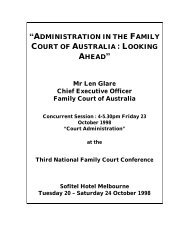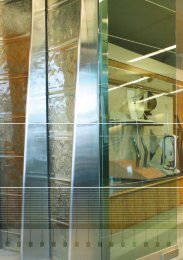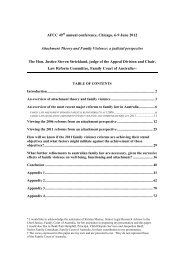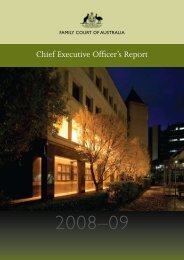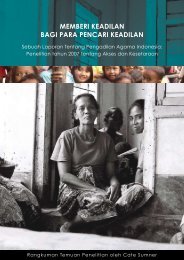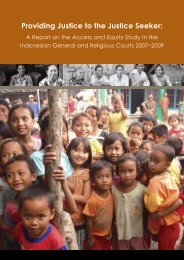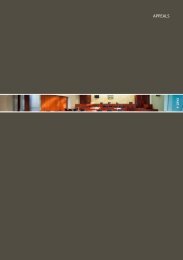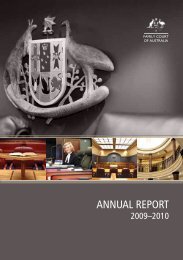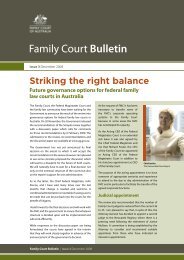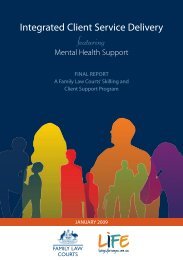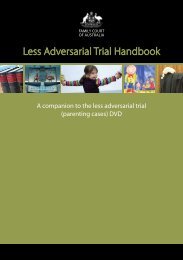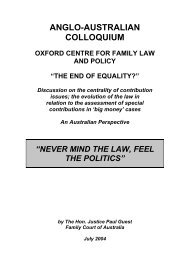Open PDF - Self represented Litigants a challenge - Size 786 KB
Open PDF - Self represented Litigants a challenge - Size 786 KB
Open PDF - Self represented Litigants a challenge - Size 786 KB
Create successful ePaper yourself
Turn your PDF publications into a flip-book with our unique Google optimized e-Paper software.
<strong>Self</strong>-<strong>represented</strong> <strong>Litigants</strong> ~ A Challenge: PROJECT REPORT<br />
8 REPORT ON THE VISIONING WORKSHOP<br />
6 & 7 April 2002<br />
1 The project has broadly proceeded under three main streams:<br />
~ Information;<br />
~ Collaboration; and<br />
~ Innovation.<br />
2 The project has concentrated so far, principally upon the first of those two<br />
objectives. The third phase of the process involves the concept of bringing<br />
together those who could imaginatively contribute to the design of a system<br />
that would be fair, not only to self-<strong>represented</strong> litigants but also to those<br />
who are <strong>represented</strong> – a fair go for all.<br />
3 The first part of the process (which became the Visioning Workshop) was an<br />
opportunity for those with vision and imagination to put forward an ideal<br />
system to achieve the above objectives. Those ideas and that plan will be<br />
put before the Court to determine realistically how they might be<br />
implemented.<br />
4 Finally, whatever may have been accepted as the "real" model would be<br />
implemented incrementally in accordance with the Court’s broader<br />
objectives, plans and budget. This third phase would involve necessarily<br />
the recruiting of all relevant stakeholders to the validity of the plans and<br />
objectives.<br />
5 It was hoped that the first part of the process – the Visioning Workshop –<br />
would provide the outlines or a draft blueprint for the Court against which<br />
changes (either brought about by budgetary variations or dictated by<br />
circumstances) could be measured. It was also considered that it would be<br />
a vehicle for change in itself and would provide an impetus towards the<br />
implementation of reforms to produce a fairer go for all participants in the<br />
system. To that end the first part of the process was not to be constrained<br />
by the obviously realistic considerations of budget and staffing. The<br />
marrying of the ideal with reality was seen as the function of the second<br />
phase of the program. The third phase would refine that reality to<br />
accommodate the legitimate concerns of those who are stakeholders in the<br />
system.<br />
55



